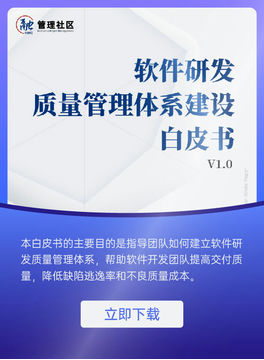Case 1: Spotify's Agile Organization
Spotify, the popular music streaming service, has built a highly successful agile organization. At Spotify, they have adopted a unique approach called the "Squad, Tribe, Chapter, Guild" model. Squads are small, cross-functional teams responsible for specific features or products. Tribes are collections of squads working towards a common goal, such as the music discovery feature. Chapters are communities of practice where people with the same skills come together to share knowledge and improve their craft. Guilds are broader groups that span multiple tribes and chapters, focusing on a particular domain or technology. This structure allows for high levels of autonomy and collaboration within teams. Squads can make decisions quickly and iterate on their products without being bogged down by excessive bureaucracy. For example, a squad working on the personalized playlist feature can experiment with different algorithms and user interfaces, getting rapid feedback from users and making adjustments accordingly. The chapter and guild systems also ensure that knowledge is shared across the organization, enabling teams to learn from each other's experiences and stay updated on the latest industry trends. This has contributed to Spotify's ability to continuously innovate and stay ahead in the highly competitive music streaming market.
Case 2: Amazon's Customer-Centric Agile
Amazon is renowned for its customer-centric approach, and this is deeply ingrained in its agile development processes. The company starts every project with a clear understanding of the customer's needs. Product teams are encouraged to empathize with customers and build features that solve real problems. For instance, when developing the Amazon Prime delivery service, the team conducted extensive research to understand customer pain points related to shipping times and costs. They used agile techniques to break the project into smaller, manageable chunks. Each sprint focused on delivering a specific aspect of the service, such as faster shipping options or more accurate delivery estimates. Customer feedback was gathered at every stage. Amazon has a culture of rapid experimentation. They launch new features in a limited, controlled environment and closely monitor customer behavior. If a feature doesn't perform as expected, they are quick to make adjustments or even abandon it. This iterative approach ensures that the final product meets or exceeds customer expectations. By putting the customer at the center of their agile development, Amazon has been able to build a loyal customer base and drive continuous growth.
Case 3: Atlassian's Open and Transparent Agile
Atlassian, a leading software company, has embraced an open and transparent agile culture. All teams at Atlassian have access to a wealth of information about projects, including roadmaps, backlogs, and progress reports. This transparency fosters trust among team members and stakeholders. For example, when developing their popular project management tool, Jira, different teams working on various components of the software could see what others were doing. This eliminated silos and reduced the chances of duplicate work. Atlassian also encourages open communication. Team members are free to share ideas, concerns, and feedback, regardless of their position in the organization. During daily stand-up meetings, everyone has the opportunity to speak up about any issues they are facing or any progress they have made. This open environment allows for quick problem-solving. In addition, Atlassian uses public dashboards to display project metrics and performance indicators. This not only keeps the internal team informed but also allows customers and partners to have visibility into the development process. This level of transparency has helped Atlassian build strong relationships with its stakeholders and has contributed to the success of its products.
Case 4: Netflix's Data-Driven Agile

Netflix is a data-driven company, and this philosophy is integrated into its agile development practices. The company collects vast amounts of data on user behavior, such as what shows they watch, when they watch, and how they interact with the platform. This data is used to drive decision-making in the development process. For example, when deciding which new shows to produce or which features to add to the streaming service, Netflix analyzes user data to identify trends and preferences. Agile teams at Netflix use data to measure the success of their projects. They set clear metrics for each sprint, such as user engagement or retention rates. If a feature doesn't meet the expected metrics, the team uses the data to understand why and make improvements. Netflix also conducts A/B testing on a large scale. They test different versions of user interfaces, recommendations, or marketing campaigns to see which performs better. This data-driven approach allows Netflix to make informed decisions quickly and optimize its products for maximum user satisfaction. It has also enabled the company to stay ahead in the highly competitive streaming market by continuously delivering content and features that resonate with its users.
Case 5: Google's Cross-Functional Agile Teams
Google is known for its innovative products, and its cross-functional agile teams play a crucial role in this success. Google forms teams that bring together experts from different disciplines, such as software engineers, designers, product managers, and data scientists. For example, when developing Google Maps, the team included cartographers, user experience designers, and backend engineers. This cross-functional approach ensures that all aspects of the product are considered from the start. The software engineers focus on building the underlying infrastructure, while the designers create an intuitive user interface. The product managers define the product vision and roadmap, and the data scientists analyze user data to improve the accuracy of the maps. Cross-functional teams at Google also collaborate closely throughout the development process. They have daily meetings to discuss progress, share ideas, and solve problems. This collaboration helps to break down silos and avoid misunderstandings. It also allows for a more holistic approach to product development, resulting in products that are not only technically sound but also user-friendly and meet the needs of the market.
Case 6: Toyota's Lean-Agile Manufacturing
Toyota, a leader in the automotive industry, has applied lean principles to its agile development processes in manufacturing. Lean thinking focuses on eliminating waste and maximizing value. In Toyota's case, they have translated these principles into agile practices on the factory floor. For example, they use a system called "kanban" to manage the flow of materials and work. Kanban cards are used to signal when more parts are needed or when a particular task is complete. This helps to prevent overproduction and reduce inventory waste. Toyota also emphasizes continuous improvement. Workers on the assembly line are encouraged to identify and solve problems immediately. They use a process called "kaizen" to make small, incremental improvements to the production process. Agile teams at Toyota are cross-functional, consisting of engineers, production workers, and quality control experts. They work together to design and optimize the manufacturing process. This lean-agile approach has allowed Toyota to increase efficiency, improve quality, and reduce costs in its manufacturing operations.
Case 7: Microsoft's Hybrid Agile Approach
Microsoft has adopted a hybrid agile approach that combines the best of traditional and agile methodologies. In some projects, especially those with more complex requirements or longer development cycles, Microsoft uses a phased approach with clear milestones. However, within each phase, they apply agile practices such as iterative development and continuous feedback. For example, in the development of a major enterprise software product, the initial planning phase may be more structured, with a detailed project plan and requirements specification. But once the development starts, the team works in sprints, delivering incremental value. Microsoft also encourages collaboration between different teams and stakeholders. They use tools like Microsoft Teams to facilitate communication and knowledge sharing. This hybrid approach allows Microsoft to manage risk effectively while still being able to adapt to changing requirements. It has enabled the company to deliver high-quality products in a timely manner, meeting the needs of its diverse customer base.
In conclusion, these seven best practice cases in agile development demonstrate the versatility and effectiveness of agile methodologies across different industries and types of projects. Whether it's building a software product, manufacturing a physical good, or delivering a service, agile principles such as collaboration, flexibility, and customer focus can drive success. By learning from these cases, organizations can implement agile practices in a way that suits their specific needs and goals. They can create more efficient teams, deliver products and services that meet or exceed customer expectations, and stay competitive in a rapidly changing business environment. Agile development is not a one-size-fits-all solution, but by studying these real-world examples, teams can find inspiration and practical guidance to improve their own development processes and achieve better results.
ARTICLE TITLE :Sharing 7 best practice cases in agile development ,AUTHOR :ITpmlib

















